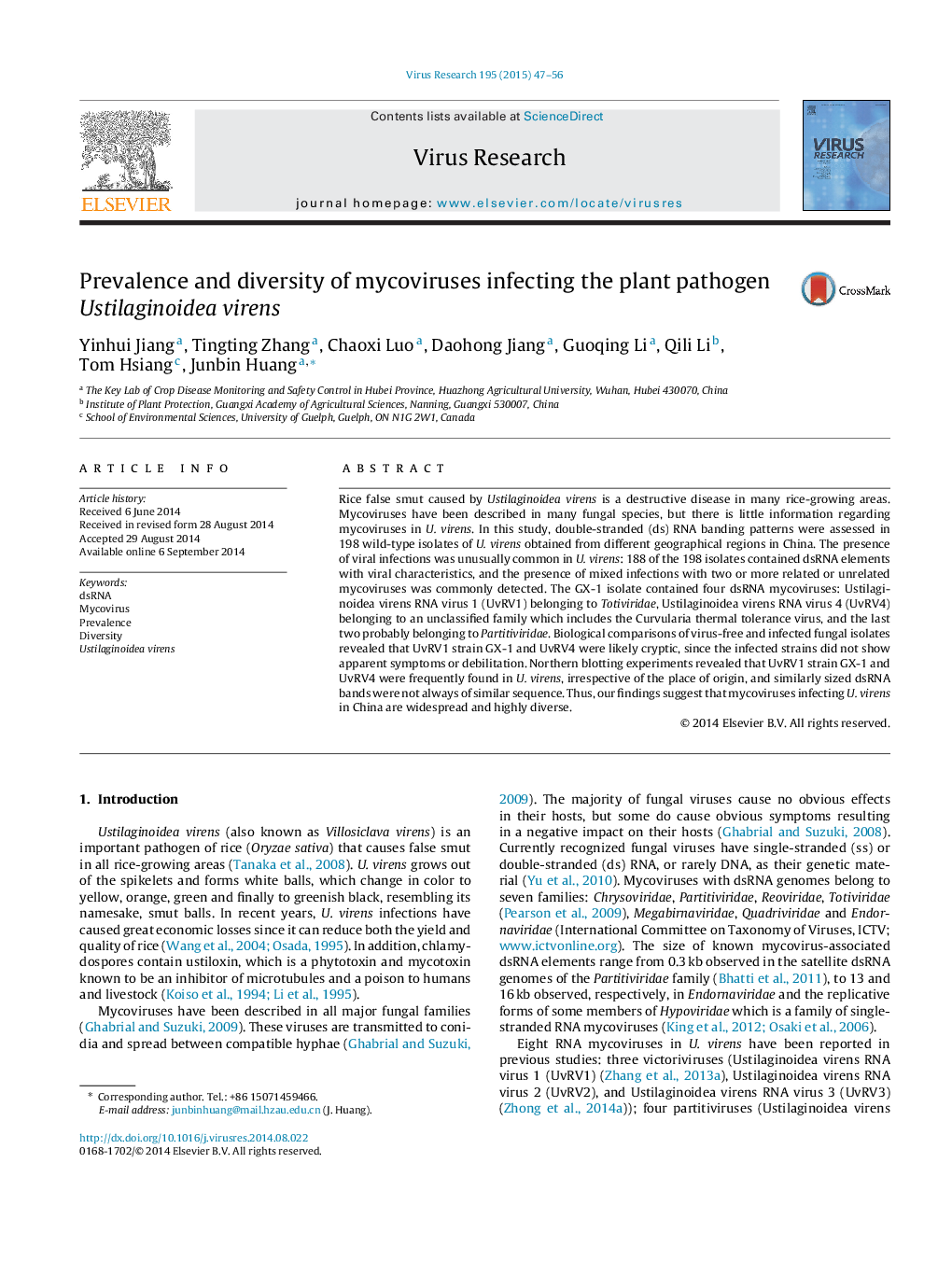| Article ID | Journal | Published Year | Pages | File Type |
|---|---|---|---|---|
| 3428345 | Virus Research | 2015 | 10 Pages |
•Almost 95% of the 198 tested isolates of U. virens from China contained dsRNA elements.•The number of dsRNA bands per fungal isolate varied from 1 to 11 and ranged in size from 0.5 to 6.0 kb.•The two most common dsRNA bands in U. virens were a 5.5 kb dsRNA (totivirus) and a 3.1 kb dsRNA (an unclassified mycovirus).
Rice false smut caused by Ustilaginoidea virens is a destructive disease in many rice-growing areas. Mycoviruses have been described in many fungal species, but there is little information regarding mycoviruses in U. virens. In this study, double-stranded (ds) RNA banding patterns were assessed in 198 wild-type isolates of U. virens obtained from different geographical regions in China. The presence of viral infections was unusually common in U. virens: 188 of the 198 isolates contained dsRNA elements with viral characteristics, and the presence of mixed infections with two or more related or unrelated mycoviruses was commonly detected. The GX-1 isolate contained four dsRNA mycoviruses: Ustilaginoidea virens RNA virus 1 (UvRV1) belonging to Totiviridae, Ustilaginoidea virens RNA virus 4 (UvRV4) belonging to an unclassified family which includes the Curvularia thermal tolerance virus, and the last two probably belonging to Partitiviridae. Biological comparisons of virus-free and infected fungal isolates revealed that UvRV1 strain GX-1 and UvRV4 were likely cryptic, since the infected strains did not show apparent symptoms or debilitation. Northern blotting experiments revealed that UvRV1 strain GX-1 and UvRV4 were frequently found in U. virens, irrespective of the place of origin, and similarly sized dsRNA bands were not always of similar sequence. Thus, our findings suggest that mycoviruses infecting U. virens in China are widespread and highly diverse.
